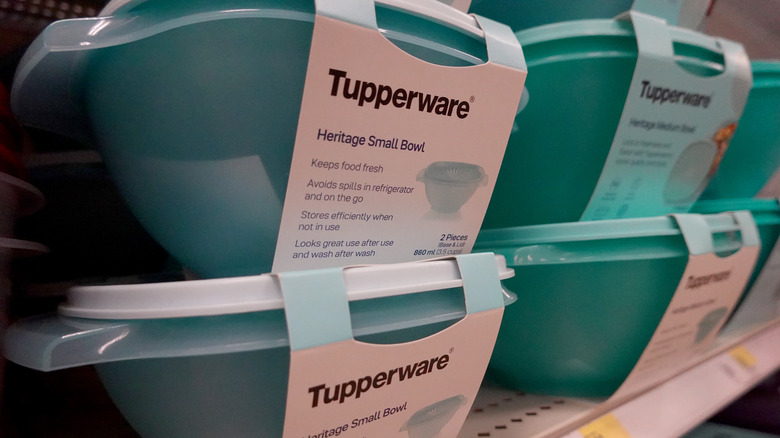Tupperware Brand Sadly Files For Bankruptcy. Is This An End Of An Era?
Put away the Chardonnay and pack up your curried deviled eggs with pickled carrots because the time for Tupperware parties may be coming to an abrupt close. Tupperware, the company known for its colorful plastic leftover containers, has officially filed for bankruptcy. In recent years, the company has seen a decline in profits and rising debts, leading to its bankruptcy claim.
However, despite the bankruptcy filing, the company's president and CEO, Laurie Ann Goldman, seemed bullish in her belief that the company would continue despite these challenges. In a press release, Goldman said that, "We plan to continue serving our valued customers with the high-quality products they love and trust throughout this process."
Though difficult, the survival of the Tupperware brand is possible. The brand is filing for Chapter 11 bankruptcy, which permits companies to make necessary changes to their business structure rather than closing outright. According to Goldman, the company plans to "[transform] into a digital-first, technology-led company." This new focus on digital business seems to go against the company's deep roots in the direct sales sector. "The historical strengths of a widespread direct selling model began to turn into weaknesses," Goldman wrote in the company's bankruptcy petition. This, paired with what the CEO calls a "challenging macroeconomic environment," led to the company's bankruptcy filing. Before the filing, Tupperware laid off over 100 employees in South Carolina earlier this year. In 2023, the company hinted at financial difficulties but managed to adjust its high-interest debt to avoid bankruptcy, at least for a while.
The Tupperware lid tolls for thee
While Tupperware may soon be a thing of the past, it wasn't all that long ago that the company had a near-ubiquitous presence in American Kitchens. The company, founded in 1946, was originally designed for use in World War II but soon made its way into kitchens. The company produces plastic kitchenware — including cups and food containers, originally sold in department stores – but it didn't see huge success until the introduction of Tupperware Home Parties. Soon, these parties became the primary means of Tupperware sales and distribution. Tupperware, and thus Tupperware parties, focused almost solely on women, who often used Tupperware parties not just as a means to make some extra cash but also to connect with friends. This direct sales business model has been critiqued as potentially predatory, as Tupperware distribution often requires perpetual recruitment and large upfront investment in products.
Still, Tupperware managed to become an American staple over the decades. Its plasticware became synonymous with food storage. In recent years, the company's name has lost prestige among consumers, with younger generations becoming less familiar with the brand. Whether the company will be able to navigate through its current restructuring to become more digitally focused is still unknown. Once an icon of post-war innovation, plastic containers now seem like a liability to the increasingly eco-friendly consumer. Only time will tell whether the company can navigate its current restructuring.

